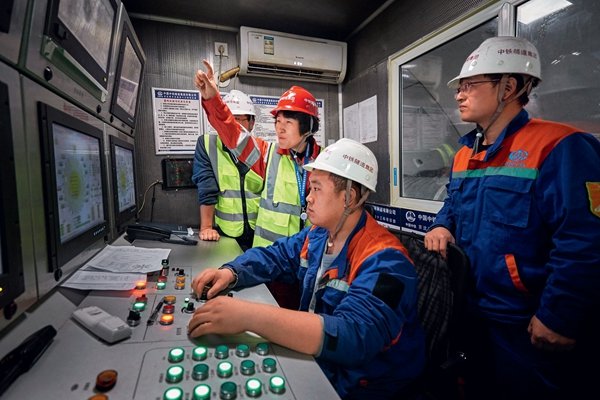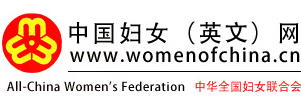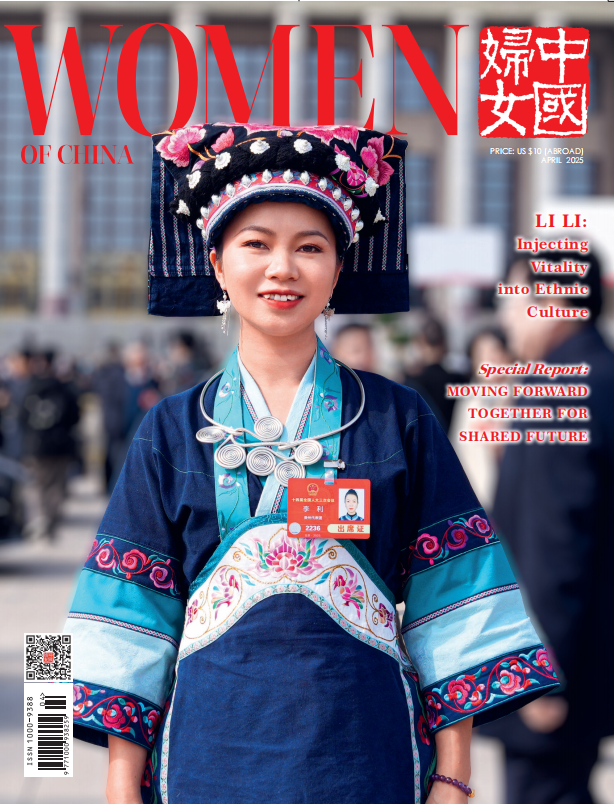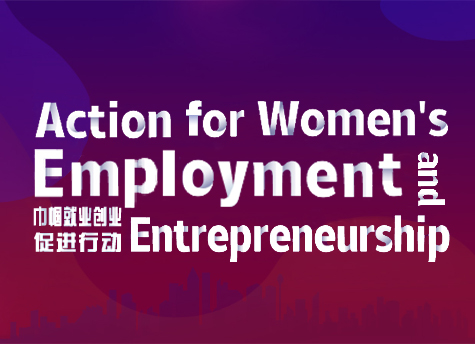Engineer Tunnels Through Life with Resilience

During General Secretary Xi's 2014 inspection of China Railway Engineering Equipment Group Co., Ltd. (CREG), Wang Dujuan, key technical leader of CREG, explained to Xi the principles and applications of a tunnel boring machine (TBM, a machine used to excavate tunnels).
More than a decade later, Wang vividly recalls Xi's emphasis of the "three transformations" — transformation from "Made in China" to "Created in China," transformation from "China speed" to "China quality," and transformation from "Chinese products" to "Chinese brands." Guided by Xi's instructions, Wang and her team have since pursued independent innovation relentlessly; in turn, they have played a major role in promoting Made-in-China TBMs globally.
Wang now serves as chief expert at CREG and chief engineer of China Railway Hi-Tech Industry Corporation Limited (CRHIC). She is a two-term deputy to the National People's Congress (13th and 14th congresses). She has made contributions to the groundbreaking research and development of Made-in-China TBMs. Wang was named a National March 8th Red-Banner Holder in 2018. She was named a National Model Worker on April 28 this year.
The construction of modern infrastructure such as railways, highways and water conservancy projects heavily relies on TBMs. A TBM combines multiple technologies, including machinery, electronics, information technology and artificial intelligence (AI). The TBM has been referred to as the "king of construction machinery." For quite a long time, China relied entirely on imported TBMs.
In 2001, Wang joined CREG's Xinxiang Machinery Company, in Central China's Henan Province. In 2002, Wang, then 24, became one of the 18 researchers on the CREG research and development team, which is tasked with developing China's first indigenous TBM. Since then, Wang has had a close bond with TBMs.

The challenges were immense as the team developed the first TBM. Wang and her colleagues often worked late into the night. More than 10,000 components make up a TBM, and sometimes, a tiny valve would stump the team. After years of hard work, the team made breakthroughs in five core technologies.
In April 2008, China's first domestically developed earth pressure balance (EPB) TBM, with independent intellectual property rights, debuted in Xinxiang, a city in Henan. That TBM is known as the "China Railway No. 1" TBM. Its maiden deployment, during a subway project in North China's Tianjin Municipality, was a success. "That triumph proved we could do it, and it instilled in us great confidence," Wang says. That was the first step in building China's self-reliance and strength in TBM technology.
For years, Wang has led her team in expanding China's TBMs in overseas markets. The team developed the world's first horseshoe-shaped EPB TBM, the largest rectangular TBM, the largest diameter hard rock TBM, and the first vertical shaft hard rock TBM. The team now possesses 16 internationally leading technologies, filling critical gaps in the industry.

China exported its first domestically produced TBM in 2012, after China Railway won the bid to help construct a subway in Kuala Lumpur, Malaysia. The "China Railway No. 50" TBM completed the tunnel 43 days ahead of schedule. That set a record for metro TBM tunneling in Malaysia.
"In recent years, through the Belt and Road Initiative, we have showcased Chinese expertise in underground engineering. Today, more than 100 Chinese TBMs operate in more than 30 countries or regions on five continents," Wang says.
Just as a TBM advances, meter by meter, Wang tunnels forward in her life and career, like a resilient TBM. Throughout the years, she has risen from an entry-level engineer to a chief engineer, by devoting herself to relentless learning, and by facing difficulties head-on.
"I have learned, through practice, to be coolheaded and maintain critical thinking when under pressure. I believe there are always more solutions than difficulties. Keep learning, keep growing. That's how we become better versions of ourselves," Wang says.
The journey of China's TBM technology — from inception to export — has been one of relentless efforts, self-reliance and groundbreaking innovation. It mirrors Wang's own arduous journey of growth, which has been marked by continuous learning and self-confidence. Through tunnels and trials, Wang has continued to carve a path — for China's TBMs, and for generations of engineers to follow.
Photos from Interviewee
(Women of China English Monthly May 2025)
Editor: Wang Shasha
Please understand that womenofchina.cn,a non-profit, information-communication website, cannot reach every writer before using articles and images. For copyright issues, please contact us by emailing: website@womenofchina.cn. The articles published and opinions expressed on this website represent the opinions of writers and are not necessarily shared by womenofchina.cn.?








.jpg)

 WeChat
WeChat Weibo
Weibo 京公綱安備 11010102004314號
京公綱安備 11010102004314號